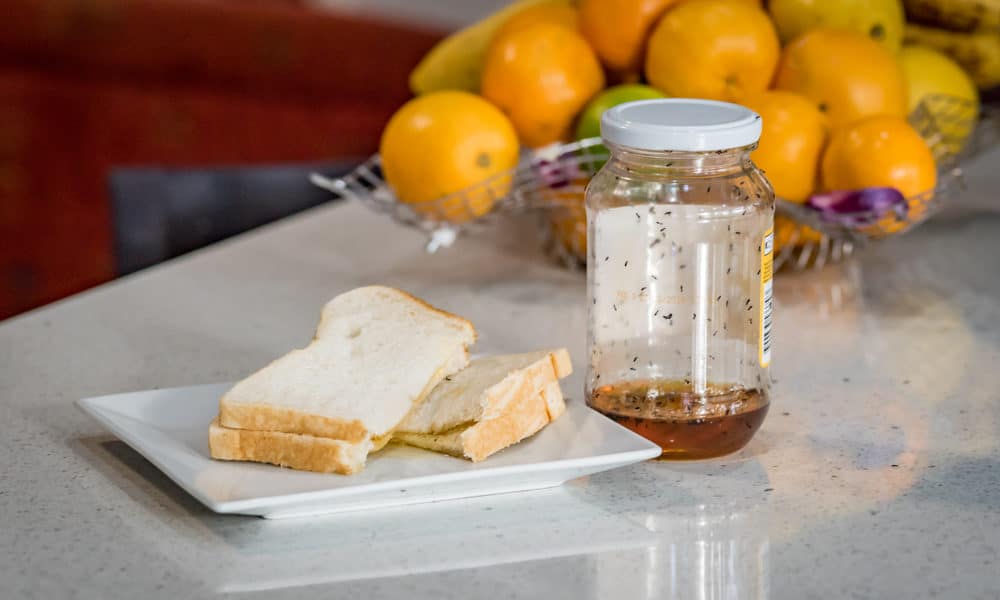We can probably all agree that there is nothing more annoying than finding ants crawling in your kitchen. While it is typically a seasonal problem beginning around April, an ant attack is a consistent issue year over year.
Have you ever wondered how to get rid of these ants in your kitchen? After thorough research and testing, we have rounded up the top 10 ways to get rid of and prevent the ants in your kitchen.
How to Get Rid of Ants In The Kitchen
1. Use A Vinegar Spray
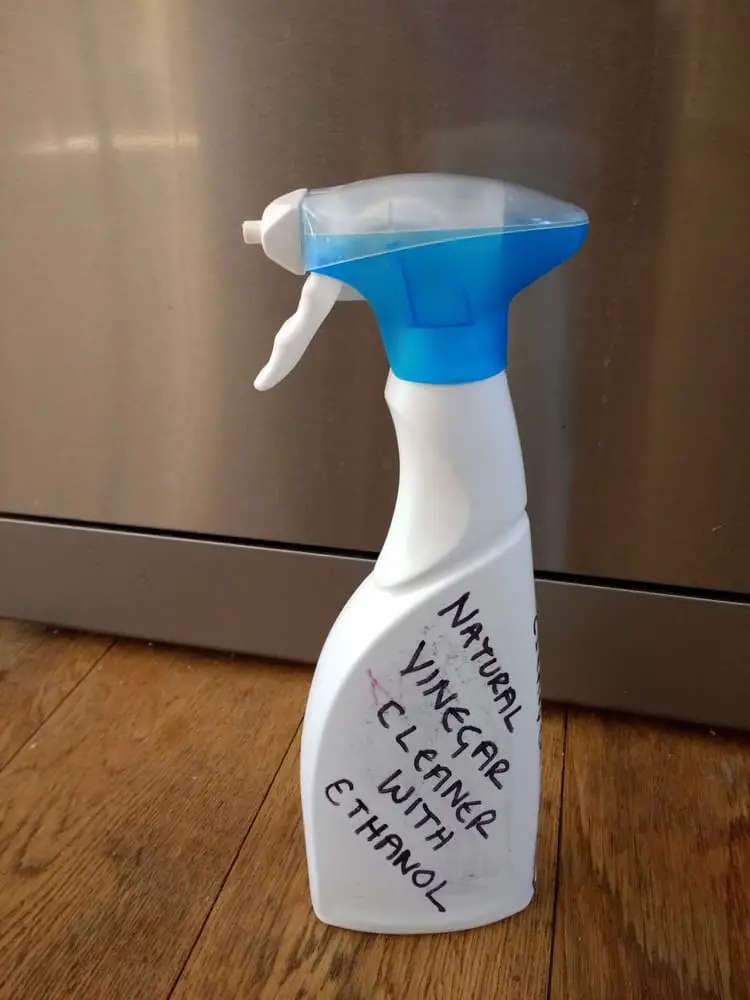
A simple solution using products normally already in the house, is a vinegar spray.
The vinegar spray is almost always effective in killing the ant upon contact. The only issue here is you are only killing the ants that you can find, and not getting to the root of the problem, which is the nest.
Like we mentioned, the nest is usually outside so keep an eye out for anthills nearby, and keep stacks of wood far away from the house, as ants like to build their homes in wood.
2. Use Boric Acid Powder
This may leave you with your head scratching, but never fear we’re here to talk you through this one.
Only use this option if you find the actual nest inside, like somewhere in a crack in the wall or windowsill. Boric acid powder can be purchased on Amazon so don’t worry about not having access to the solution!
Apply a thin layer of the powder (boron and water) directly to the nest. This will kill the ants, but is not harmful to humans.
After you have applied the powder and all ants are dead, you will want to remove the nest and dead ants from your home, using the hose of your vacuum is an easy and effective way to do so. Don’t forget to empty the vacuum bag when you’re done!
Reapply another layer where the nest was for safekeeping and seal off the area if it’s in a place that can be caulked.
3. Use Ant Traps
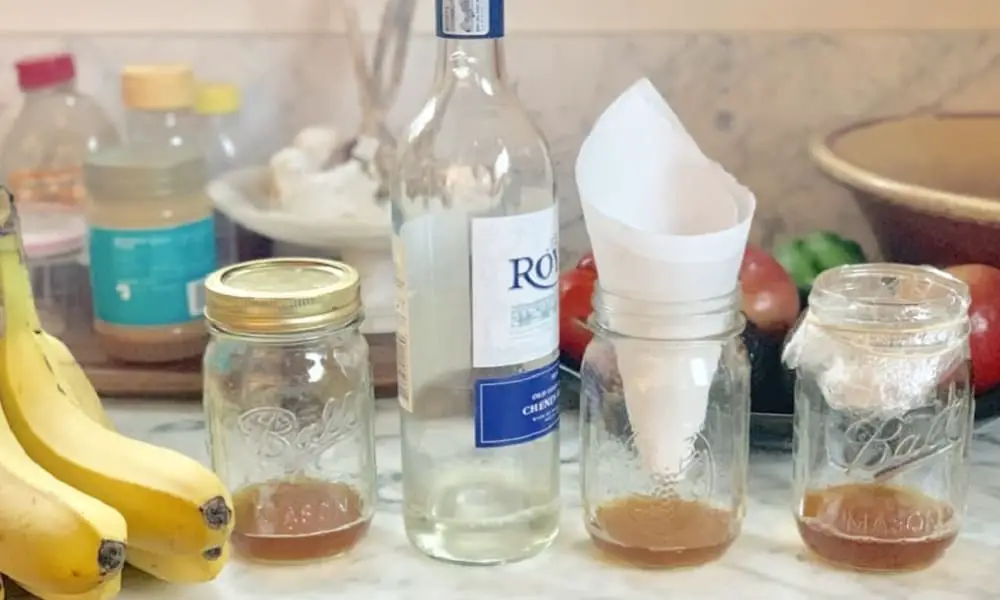
Planting ant traps around the house may have been your first thought when trying to get rid of ants. Bob Villa, the famous home expert, recommends using a Terro trap, which can also be purchased via Amazon – yay Prime!
This is most effective when you can’t find the ant nest but you are able to locate the entry point. Place the Terro trap, or a homemade trap, as close to the entry point as you can.
The bait inside the trap attracts the scout ants, and they take the bait, and return to the colony with their findings. Once the bait has been moved to the nest, the magic happens. This will kill the ants in the nest, and prevent them from returning to your kitchen.
It can take a couple of days to kill off the entire colony so don’t fret if you see ants for the next few days. However, make sure that you have cleared any other food from the entry area so you don’t attract them back.
You may be wondering about the homemade ant traps, well there are quite a few options. Here are 3 homemade options to test out on your pests.
- Homemade Trap 1: The Green Solution
This is the most “green friendly” option but will still require you to purchase materials not often found in the house: Diatomaceous Earth (DE).
Diatomaceous Earth is essentially a dead algae that is made up of small, microscopic particles that have a jagged, razor like edge that kills the ants. To humans it just feels like a powder; so don’t stress about cutting yourself when you sprinkle it around the kitchen.
Make sure you have food-grade DE and sprinkle where you have seen the ants wandering. This solution will only kill the ants on contact, and will not wipe out the colony.
- Homemade Trap 2: More Boric Acid to the Rescue
Again, boric acid comes into play. If you can’t wait for your Amazon delivery, try popping into the local pharmacy for the acid. Mix 1 teaspoon with ¼ cup of corn syrup and drop the mixture onto wax paper.
Place the wax paper near the entry points for the ants and let them carry the solution back to the colony. Once the bait has been in the nest, it should effectively kill off all ants.
- Homemade Trap 3: A Spoonful of Sugar
In this recipe, we meet a relative of boric acid, borax, which is a laundry booster.
Mix 1 tablespoon of borax, with 1 tablespoon of powdered sugar, and a little shortening. This should make a crumbled mixture, which will also be placed on wax paper and positioned near the ant’s entry point.
4. Use a Gel Solution
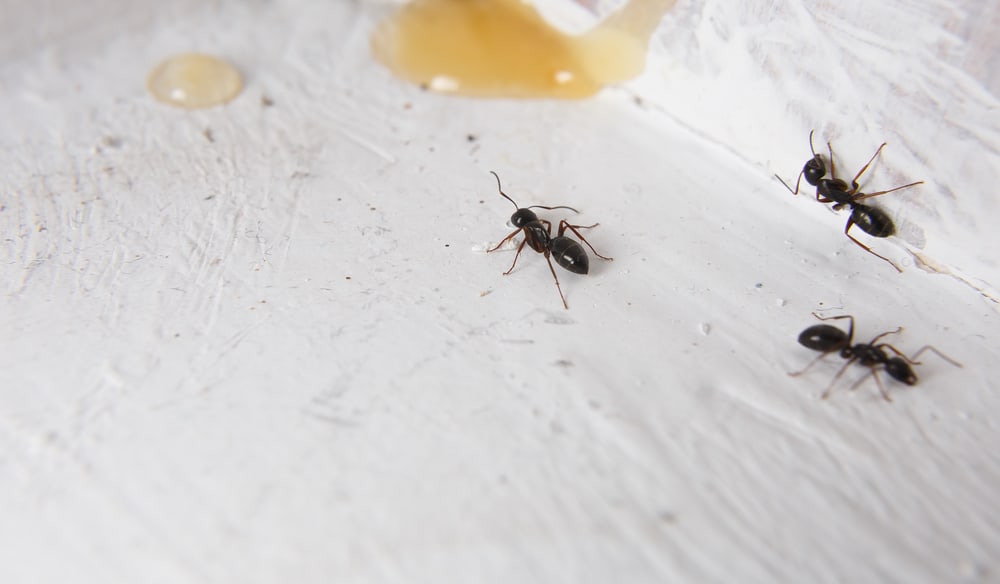
We’ve talked sprays and traps, but let’s dive into gel solutions. There are a number of different gel brands at a wide range of prices. These are more so recommended for people without pets or children.
The benefit of the gel solution is that you can apply as much as you want to certain areas. Say you saw 10 ants in the windowsill but you couldn’t even count how many were by the stove, divide and conquer here with the gel pesticide.
Ant-trax is one of the most powerful gel solutions available. The gel comes in a syringe that is easy to apply in clean lines to the effective areas.
Be warned, this may make the problem worse before it gets better. Like the other solutions, it can take a few days for the pesticide to get back to the colony and begin killing the ants.
5. Start Outside
As mentioned, the actual nests for the ants can usually be found outside. According to Solutions Pest & Lawn, starting the pesticide outside in your lawn can be an effective way to get rid of and prevent further ant invasions.
On Solutions’ YouTube page there is a video detailing which products to use for DIY lawn pesticides. These can be used in your grass, mulch, and flowerbeds.
Reclaim I/T is the first product that Solutions Pest & Lawn recommends as it works quickly, but also provides long term results. You can link this to your water hose sprayer and attack the yard.
Another effective method for attacking the ant problem from outside is using a few easy tools already in your kitchen: dish soap, water, and a bucket!
Mix one-part dish soap to three parts water and pour the combination directly onto the nest. The soap works to coat and suffocate the ants, while the water drowns them. It’s a one-two punch sure to rid your kitchen from future ant invasions.
6. Dust Bust
Solutions Pest & Lawn’s video went on further to suggest using a dust solution to get rid of the ants. D-Fense Dust is a waterproof solution that is safe to use indoors or outdoors. Spray it in hard to reach areas to kill the ants.
Terro, another pesticide manufacturer with a wide product line, claims that the ant dust can continue to kill for up to 8 months. Their ant dust is also safe to use in cracks and crevices for indoor solutions.
7. Bust Out The Baby Powder
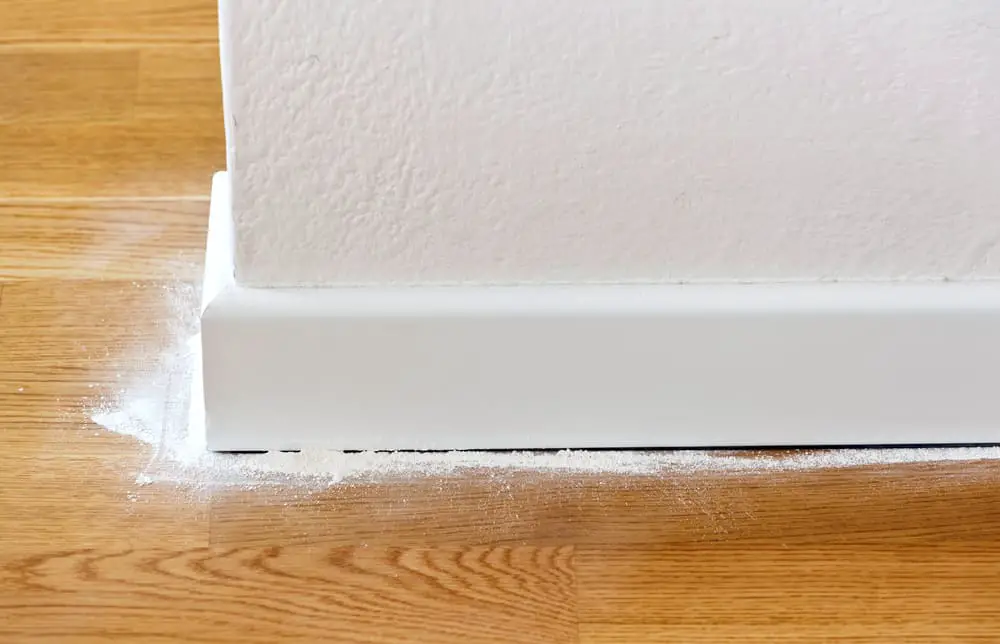
You may notice a trend when it comes to dusty, powdery solutions when it comes to ants. They hate it, so lay it on thick! Baby powder or talcum powder is an easy, readily available solution to get rid of ants in the kitchen.
The upside to using baby powder is the kitchen will smell fresh, and not like vinegar or chemicals. However, the powder is not going to kill the ants, yet it will deter them from returning. Quick fix for the problem, but should be combined with another option.
8. Use Cinnamon
The powder that is already hanging out in your cabinets, maybe the fix you need! Cinnamon is another great tool, often on hand, to get rid of ants in the kitchen.
Sprinkle cinnamon, or if you have a cinnamon essential oil, soak cotton balls with it and cover entry points for the ants in your kitchen. This is another solution that may smell better, but will only repel the ants and not kill them.
We recommend using the cinnamon or baby powder solutions as an “upon sight” fix for the ants to repel them long enough to get a strong pesticide to attack the colony.
9. Bring Out the Essential Oils
Essential oils are a natural solution to getting rid of ants in your kitchen, or anywhere else around the house. While not as effective as a chemical solution, these will still help to repel the pests.
Peppermint oil, however, has been tested to kill ants and when sprayed directly onto them and will repel them if sprayed or dropped around the entry points.
Clove essential oil is another natural solution that works to kill ants. When sprayed directly it can also take out red fire ants!
10. Turn To Your Fruits

While we may love the smell of freshly peeled and sliced cucumbers, lemons, or limes, ants have the opposite reaction to these kitchen staples.
Ants are turned off by the smells and toxic oils that many citrus fruits and cucumbers emit. The juices from the fruits can be squirted around entry points and onto ants for indoor protection.
Take the peels and zest from the fruit outside to the yard to begin deterrence externally. The best way to get rid of ants in your kitchen is to not let them in to begin with! Put the peels and zest onto mounds, or around areas where you tend to see the ants gathering.
This is a great natural solution indoors or outdoors to repel ants from raiding your kitchen.
Keep It Clean
Remember, the basics as well when it comes to getting rid of ants in your kitchen. Keep the trash and recycling area clean, and well covered so the ants can’t catch the scent and come looking for food. It’s an easy solution to prevent a potentially large problem.
Keep an eye on your plants as well. Many houseplants have aphids, a tiny insect with a sweet secretion that attracts ants. Wipe down any indoor plants from time to time and monitor the situation if you see any small bugs.
As you can see, there are a number of ways to repel and kill ants around your kitchen, the rest of the home, and outside. Whether you prefer a natural product to keep your home and environment safe, or a chemical product for a quick kill, we have a solution for you.
Recap of 10 Ways to Get Rid of Ants in the Kitchen
- Use Vinegar Spray
- Use Boric Acid
- Use Ant Traps
- Use a Gel Solution
- Start Outside
- Dust Bust
- Bust Out the Baby Powder
- Use Cinnamon
- Bring Out the Essential Oils
- Turn to Your Fruits
If you have any questions drop them in the comments – we’re here to help!
